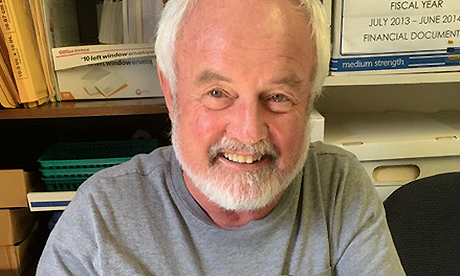Recently some 2000 members of the National Guard of the United States have been sent to the Southern Border with Mexico.
The National Guard exists for the protection of the nation.
They assist in times of natural disasters or respond to an armed threat from a foreign military force.
None of that is happening at the moment on the border.
Maybe what elicited it was news of a group of Central Americans from their country controlled by narco-trafficking gangs with money from the US sale of their illegal drugs who were making their way to the US border to seek refuge.
There does not seem to be any need for the National Guard to serve down here: there are no invading armies nor hurricanes.
The border has all sorts of different police forces, local, state and federal which are more aggressively than usual seeking out the illegal alien, the drug trafficker and his drugs, the coyote and or human trafficker /smuggler.
This has always been so in modern times.
The Rio Grande Valley was once part of Mexico.
In those days the people crossed the river as need be trying to eke out their existence in this fertile but desert land. The people were all Hispanic, the same genes, the same culture and the same everything.
But since 1848 a line was drawn in the sand.
At first there was no policing other than to keep people in, namely the escaped slaves,(Fugitive Slave Act 1848) the latter to keep people out meaning Chinese immigrants.(Chinese exclusion Act of 1882)
However from 1924 onwards the border patrolling began, sometimes strictly enforced other times more laissez faire, allowing immigrant workers to serve agricultural and enter the labor force to do what north Americans didn’t want to do.
And the locals?
Some families have always been here, some arrived 100 years ago, others later on and many, about 13% ” wetbacks” (those who metaphorically swam across the river.)
Life goes on as usual maybe not quite as usual as before the Spanish conquest, or the US annexation, but as usual as can be.
Some moments have been with much border restrictions, others more laissez faire, always having to struggle to survive economically but life goes on come what may.
Maybe there is a spirituality of the border, much dysfunctionality , much stress, but in many ways a spirituality of “primero a Dios ” “first God” which means He is in charge come what may.
There are too many brave valley people who struggle as is a democratic right to call out the authorities, over injustice and corruption and bring from the darkness to the light of day things that are happening that should not be.
Many groups come together and speak out at risk.
One of these people I know is a brave, resistant and persistent lady who last year after a visit of her group to Washington D.C., pleaded the cause of the simple folk on the border saying:
“Daily life is changing for the worse in my border community.
“My neighbors live in fear that a traffic infraction may turn into a deportation.
“Local police are being asked to enforce immigration laws and that violates the trust with the community.
“Now the president is proposing spending our taxpayer dollars on expensive and unnecessary walls.
“We already have walls.
“I live right next to one that divides our community.
“Our community is poor. More walls will not alleviate our poverty, pave our streets, or provide the public services we need.
“Walls are not the answer to anything.”
- Fr Tony O’Connor is a New Zealand Marist priest working in the Rio Grande Valley on the border the USA with Mexico. He is a third generation kiwi; his first ancestor families traveled from Ireland and 1867 arrived in New Zealand. Like most poor migrants they came looking for a better life.
- This is the second of 6 pieces on his experience of life on the border between Mexico and the USA.
News category: Analysis and Comment.




